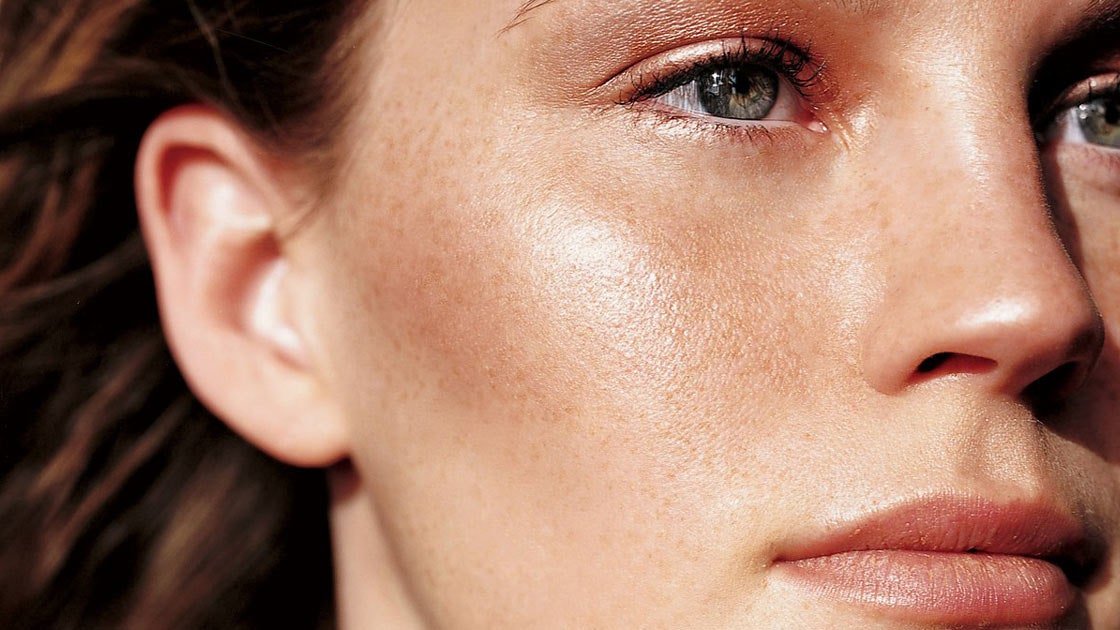The list of hot skin care ingredients on the market may seem endless, but certain dermatologist-approved staples are worth keeping firmly in your rotation. Get your vitamin C: This ingredient may seem understated given its familiarity, but it’s a hallmark of pro-level routines for its multitasking ability and visible results. Vitamin C is the gold standard and natural collagen booster for brightening dull skin and fading sun spots, especially as we age. So having a good understanding of powerful antioxidants is essential to a solid skin care strategy.
“Vitamin C is probably the most powerful topical antioxidant we have,” says dermatologist Joshua Zeichner, MD. “Vitamin C neutralizes free radical damage, protects skin from UV rays and other environmental aggressors, and evens out skin tone by blocking the formation of abnormal pigmentation.”Darker age spots will also disappear . ” And while it’s best known for brightening, it can also help tighten skin, adds Los Angeles facialist Kate Somerville. “I’ve been using vitamin C in my clinic for years to help firm and firm the skin around the neck and décolletage,” she says.
The best part? Vitamin C can be incorporated into both your morning and night routine for maximum effectiveness and 24-hour brightness. Here’s how to make the most of our hero ingredients to achieve brighter, smoother, plumper skin.
Choose the right concentration
To maximize the effectiveness of topical vitamin C, it’s important to identify the right concentration for your skin type, says New York City dermatologist Dr. Patricia Wechsler. “Start with a low concentration of 10% and increase to 15% or 20% as tolerated,” she instructs. For oily or normal skin, L-ascorbic acid is the most potent form of vitamin C and the most beneficial. On the other hand, if you have dry or sensitive skin, magnesium ascorbyl phosphate, a water-soluble vitamin C, is less irritating.
Pay attention to pH
Absorption of vitamin C depends primarily on its pH level. If you have normal skin, look for one with a low pH of around 3.5 for optimal absorption. If you have sensitive skin, you should use a formula with a pH of 5-6. “This is your skin’s natural pH and isn’t too irritating,” says Wexler.
Use serum
Serums are the most common type of vitamin C product. These are designed to deliver high concentrations of active ingredients in a simple, layerable form, “keeping the ingredients stable and increasing their penetration into the outer layers of the skin,” Zeichner says. As far as supplemental ingredients go, Wexler believes that vitamin C works best in combination with vitamin E, ferulic acid, B vitamins, and hyaluronic acid. “Vitamin C and vitamin E are both antioxidants and support each other,” she explains, adding that ferulic acid supports both vitamin C and vitamin E in fighting free radical damage and collagen production. It added that it is another antioxidant that strengthens and stabilizes. That said, sensitive skin types may benefit from mixing the serum with a moisturizer or choosing a moisturizer with vitamin C for a gentler delivery.
start slowly
Regardless of your skin sensitivity, we recommend testing new ingredients step by step. “It’s important to start slowly when incorporating any active ingredient into your daily routine,” Somerville says. “I’ve seen amazing results in clients who have gone from taking vitamin C three times a week to taking it daily.” To that end, don’t expect instant gratification. . “It takes several weeks of continued use before you start to see an improvement in skin tone,” Zeichner says, adding that some of vitamin C’s effects may be due to vitamin C being an important ingredient for prevention. may not be perceptible, he added.
Please keep it safe
There are two broad categories of vitamin C serums: water-based and anhydrous (meaning “without water”). The former is more unstable and sensitive to light, so it is usually packaged in opaque or amber bottles, while the latter tends to be stable even in the presence of sunlight. No matter which type you choose, it’s important to keep the vitamin C stable and airtight in a dark, cool space. “If the color turns dark or cloudy, it’s already oxidized,” Wexler warns, adding that the same is true if you notice a foul odor. Packaging is also important. Choose an airless pump if possible, as traditional droppers can accelerate oxidation and cause antioxidant breakdown, says board-certified dermatologist Dr. Whitney Bowe.
Layer under SPF
Unlike hydroxy acids and retinol, vitamin C does not make your skin more susceptible to sunburn. However, the most potent form of vitamin C itself is teeth Due to their high exposure to light, it is essential to wear them in conjunction with ingredients that provide broad-spectrum UVA/UVB coverage. The good news is that vitamin C provides extra protection when layered under a sunscreen with an SPF of 30 or higher. “Think of it as a safety net that helps neutralize free radical damage that can occur due to ingress of UV rays despite your best protection efforts with sunscreen,” says Zeichner. .
brighten up your diet
Vitamin C may be a hot topic, but it also works wonders in your body. “You can incorporate vitamin C into your diet to nourish your skin from the inside out,” says Bowe. “Citrus fruits (oranges, lemons, grapefruit) are good sources of vitamin C, but you can also get things like bell peppers.”

